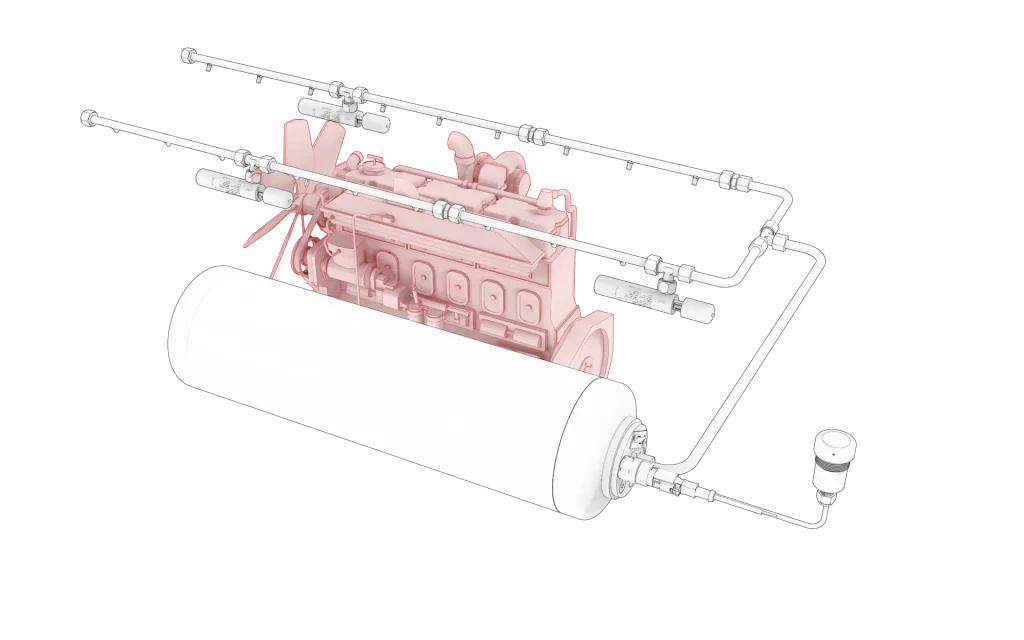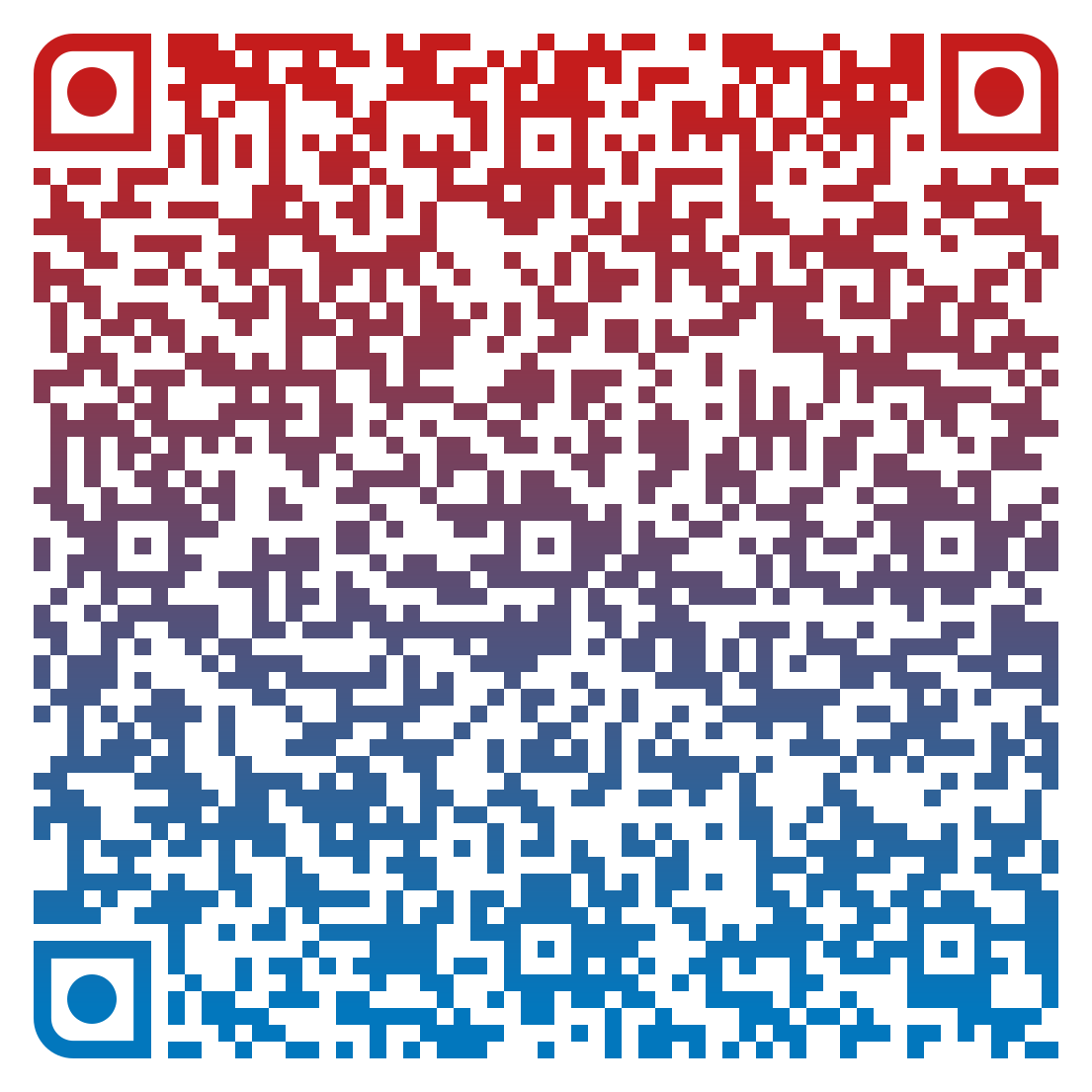The detexline automatic fire suppression system was developed due to the requirement from mining companies for a system that was reliable and eliminated trouble spots.
By eliminating electricity and pressure (from the tank and detection lines) and increasing simplicity, we found a solution that met the requirements for a rough fire suppression system for vehicles: the detexline.
Whether for vehicles, heavy equipment or industry, our fire suppression systems are highly reliable.
With precise detection and a liquid extinguishing agent, a fire is quickly detected and suppressed by the cooling power. There are no false discharges, leaks and electrical or battery problems.
Vehicles equipped with automatic fire suppression systems bring several advantages: safety for the driver and passengers, avoid loss of equipment and unnecessary stops.

Liquid (Tiborex Absolute) Fire suppression systems. Delivered in 4 Litres, 7 Litres, 14 Litres and 24 Litres tanks.
detexline 4v is UNECE r-107 certified.
10 years with no parts replacement.
Liquid (Tiborex Absolute) Fire suppression systems. Delivered in 4 Litres, 7 Litres, 14 Litres and 24 Litres tanks.
detexline 4v is UNECE r-107 certified.
10 years with no parts replacement.
Liquid (Tiborex Absolute) Fire suppression systems. Delivered in 4 Litres, 7 Litres, 14 Litres and 24 Litres tanks.
5 years with no parts replacement.
protecfire conducted at RISE (Sweden) tests for fire suppression systems intended for engine compartments according to SP Method 4912, UNECE R107, AIS 135 – SPCR 183 or SPCR 199 (P-mark).
Tests made with 4 liters detexline container, with Tiborex Absolute extinguishing agent.
All fire scenario tests were successful.
VdS tests security products and assigns them to classes which are used by insurance companies and the police.
With its strict certification regulations, VdS provides for high-quality products that guarantee the best results and security even when used under the most adverse conditions.
This document includes a fire-testing procedure for fire suppression systems for engine compartments of buses and coaches and includes four tests extracted from SP Method 4912 (SP is a Technical Service for UNECE Regulation No. 107)
The requirements of fire suppression systems apply to: single-deck double-deck rigid or articulated vehicles Category M2 or M3 and specifically vehicles having a capacity exceeding 22 passengers in addition to the driver – “Class III”. Class III vehicles are constructed exclusively for the carriage of seated passengers, more commonly referred to as “coaches”.
Certification intended for Mining vehicles and equipment
National Standard Institute from Chile (INN), published “Certificación de Conformidad – Modelos de Certificación ISO/CASCO, INN 100-611” Which is a translation of the original text in English “Technical Assessment and verification of conformity to standards and specifications”
DMT approval certificate for underground coal mines vehicles used on Germany.
Fine Spray Fire suppression system approval for solid and liquid fires.
The letters ‘CE’ appear on many products traded on the extended Single Market in the European Economic Area (EEA). They signify that products sold in the EEA have been assessed to meet high safety, health, and environmental protection requirements.

protecfire´s own liquid extinguishing agent.
No Fluor, Biodegradable, non toxic and environmentally friendly.
Download our Safety Data Sheet (eng) and COC (Certificate of conformity)
KBA approval certificate for buses and road vehicles used on Germany.
ISO 9001 sets out the criteria for a quality management system and is the only standard in the family that can be certified to (although this is not a requirement). It can be used by any organization, large or small, regardless of its field of activity.
Coal Mining Certification for fire suppression systems.
protecfire conducted at RISE (Sweden) tests for fire suppression systems intended for engine compartments according to SP Method 4912, UNECE R107, AIS 135 – SPCR 183 or SPCR 199 (P-mark).
Tests made with 4 liters detexline container, with Tiborex Absolute extinguishing agent.
All fire scenario tests were successful.
Tests for fire suppression systems intended for engine compartments according to SP Method 4912, UNECE R107, AIS 135.
Tests for fire suppression systems intended for engine compartments according to SP Method 4912, UNECE R107, AIS 135
This method assesses the fire suppression performance of fire suppression systems under mock-up operational conditions. For this purpose, several different types of fires are ignited and stabilised inside an enclosure with engine compartment characteristics. Fire suppression systems are then evaluated based on its ability to extinguish the various test fires.
SP Method 4912 tests fire suppression systems intended for engine compartments in a well-defined and objective way. Systems are subjected to realistic fire scenarios that can occur on and around a vehicle or machine, as a means to evaluate their performance. The system tests are based on the geometry, obstructions and air flow typically found in engine compartments. This allows for rapid performance evaluation under reproducible and repeatable conditions.
The fire suppression system may be subjected to the test scenarios listed below. In the end, a system will achieve a ranking based on the number of tests completed and the conditions, e.g. ventilation rates and/or level of openness of the testing rig, under which this was achieved.
High Fire Loads
Evaluate the fire suppression system’s ability to suppress large fires. As an example, these large fires may originate from a broken pressurised fuel hose that sprays against hot surfaces, resulting in rapid fire development. It is crucial that fire suppression systems can effectively deal with these fires, as they may even occur if reliable detectors are installed.
Low Fire Loads
Are used to judge the system’s ability to deal with small fires in an enclosure. These small fires can be difficult to extinguish and require that the distribution of suppressant in the compartment is effective.
Systems that can extinguish our Class A Fires have proven their ability to deal with deap-seated fires in fibrous materials. Examples of such materials are sound insulation, rubber and/or some plastics, which commonly act as a secondary fuel source.
Obstructions are often present in engine compartments. This is emphasised in our Hidden Fires test.
Here the suppression system shall extinguish a small obstructed fire that is out of reach for direct fire suppression. As such, the total flooding capabilities of a system is evaluated.
Certain components in engine compartments may still be hot enough to ignite flammable material after a fire has been extinguished. Our Hot Surface Re-Ignition test evaluates the fire suppression system’s performance in cooling down those hot surfaces.
Font: RISE

protecfire GmbH
Weidekamp 10
23558 Lübeck
GERMANY
E-Mail: info(at)protecfire.de
protecfire ® – all rights reserved